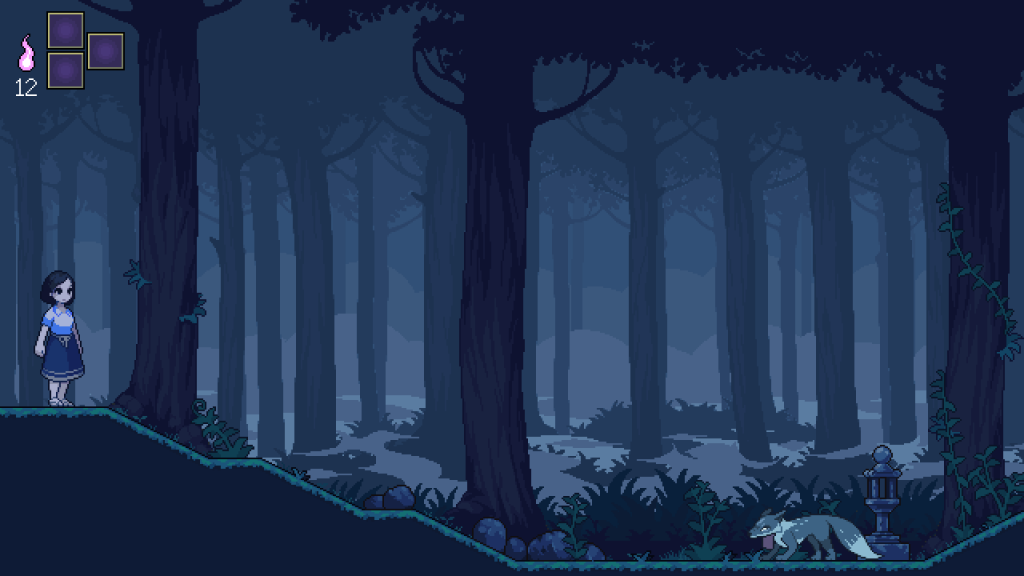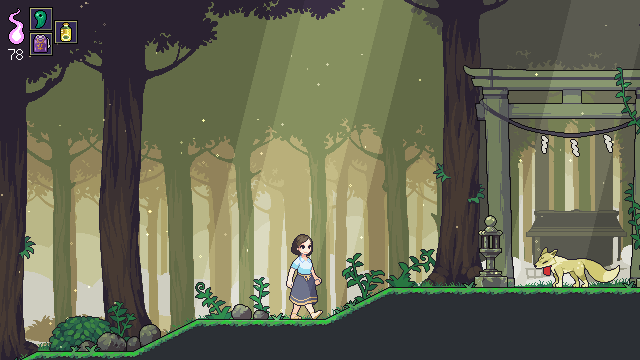Last summer, we stumbled across Miyamori, a lovely folktale-infused videogame about Japanese mythology in the Tōhoku countryside. The game follows a Japanese woman named Suzume as she attempts to find her missing brother. Joined by the shrine guardian fox Izuna—who is looking for her partner Gedo—the game follows Suzume and Izuna’s journey through the countryside to find their missing halves.
Since then, Miyamori has been seen in action for the first time to due to the arrival of its debut trailer, released earlier this month. Hence, it seems as good a time as any to talk to Joshua Hurd, one of the game’s creators, to find out more about his work’s inspirations.
“[T]here’s a lot of ground to cover here, but there is one theme common to many Japanese folktales—liminality,” Hurd told me. “By that I mean a threshold between two spaces. That might be the boundary between the human and spirit worlds, or it could be the brief time between sunset and nightfall. It could even be a mysterious outsider figure. In any case, the unique position between two worlds can be a powerful force of change, but it can also be dangerous.”
Hurd also feels a deep connection to works such as The Legends of Tono (1910) and the poetry of Miyazawa Kenji. While these stories deal with massively different themes, Hurd decided to bring these influences together to create a fantastical countryside for players to explore.
“What I love about The Legends of Tono is that each story is a brief vignette of some strange event,” he said. “You can read it one way, as pure fiction, or you can try and fill in the backstory of what might have actually happened to inspire the story. To me that’s the interesting part, knowing that someone, somewhere, witnessed something completely bizarre and inexplicable and then let their imagination run wild to try and make sense of it.”
Kenji’s poetry, meanwhile, mirrors Miyamori’s focus on Japan’s northern countryside. Referencing such children’s stories as The Night of Taneyamagahara and The Restaurant of Many Orders, Hurd argues that Kenji’s work inspired the game’s atmosphere. “I know Suzume would be a fan of his stories,” he said.
With Miyamori is still a ways off, the plan is to get a playable build out in the spring. Hurd said he can’t wait to hear what stories and experiences players will share once they get their hands on the game. “Folktales aren’t meant to be handed down as a matter of fact—to stay alive they need a community that’s engaged with reinterpreting their meaning,” he said. And in its own way, Miyamori is looking to do just that.
You can find out more about Miyamori on its website.



